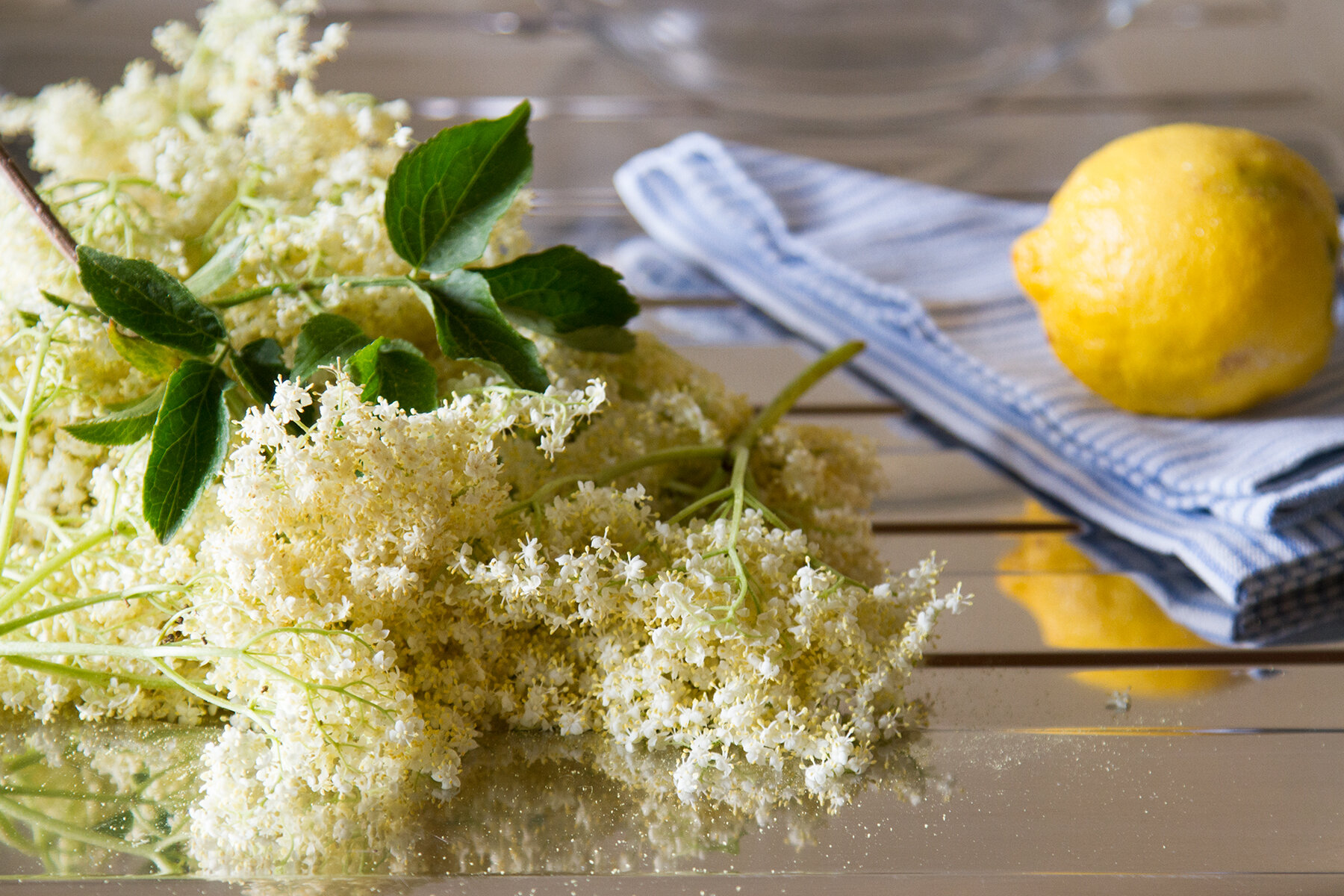
Elderflowers bloom in spring and so imbibing them in the springtime seems like a wise and festive thing to do. An elderflower cordial is not an alcoholic drink. It’s a glorified soda. But cordial is a far more delightful word than either syrup or soda and when given the choice between a delightful word and an ordinary one, delight wins. (If a cocktail is what you’re after, you would not be wrong to mix a bit of elderflower cordial with a bit of gin, to top it off with soda water, and to bask in a bit of sunshine.) 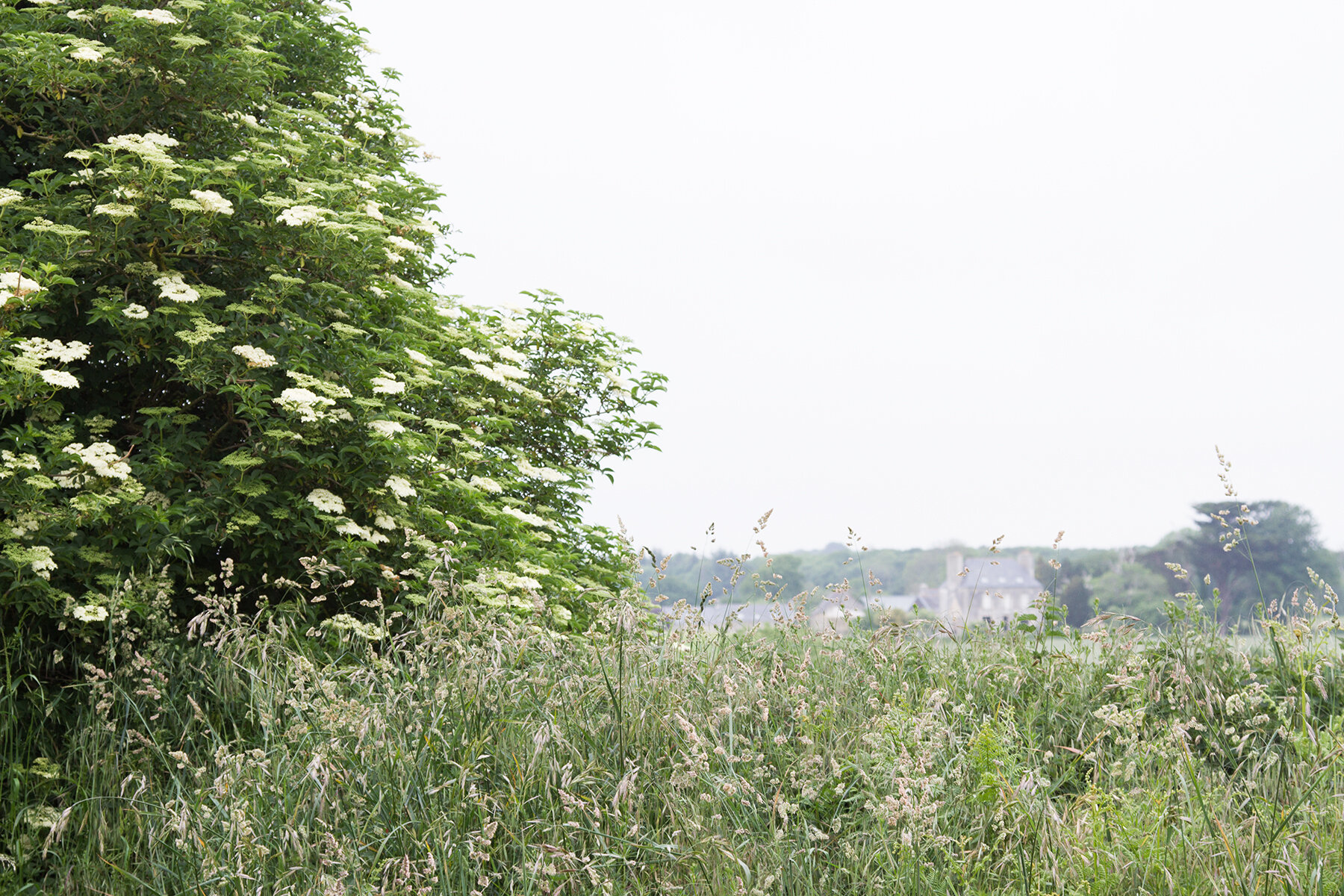
Elderflowers are everywhere in Brittany right now. I spotted my first bushes surrounding a gas station as we filled up the tank of the car we’re borrowing from my aunt and uncle. Then I made it my mission to find another bush within easy reach and a bit further away from gas station fumes. I use the term hunt only for effect. The hunt included little more effort than driving down a country road and selecting the bush that looked easiest to clip from. My point is that you don’t need to go hunting for elderflower at this time of year in France. The bushes present themselves quite willingly. (While much more abundant in Europe, elderflower is certainly findable in the US. A bush grows in Brooklyn...et cetera.)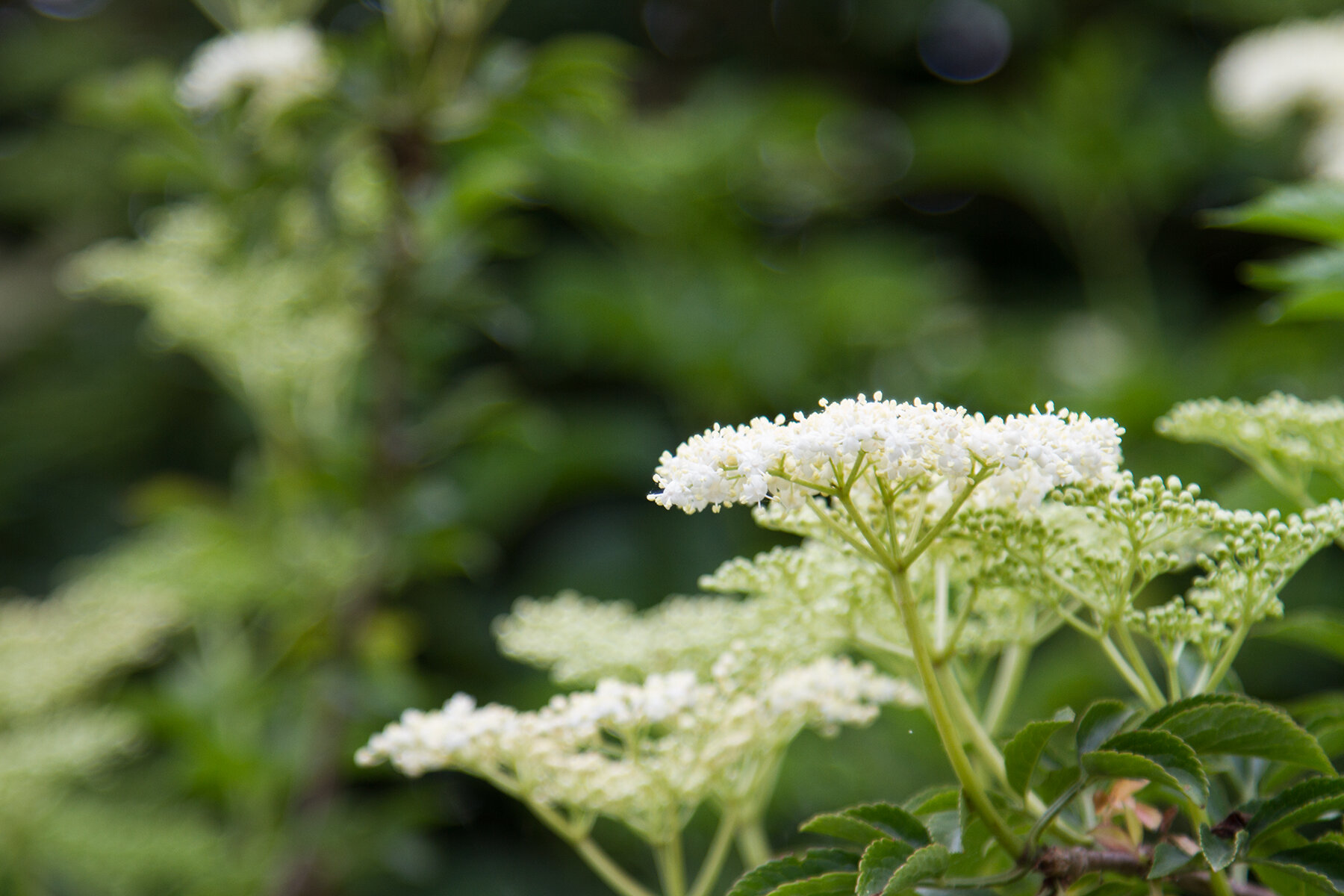 The goal for your foraging should be to find fresh, creamy blossoms full-to-brimming with pollen that you can see with your own two eyes. You’re essentially making a pollen infusion, and so don’t shy away from the blossoms that look most covered in the stuff and for heaven’s sake, don’t wash the stuff off. When identifying elderflowers, make sure you’re snipping flowers that grow on a bush and not from the ground—those would not be elderflowers. Flowers should be pungent—floral and sweet. If the bush you find does not smell like something you’d like to drink, find another spot to forage.
The goal for your foraging should be to find fresh, creamy blossoms full-to-brimming with pollen that you can see with your own two eyes. You’re essentially making a pollen infusion, and so don’t shy away from the blossoms that look most covered in the stuff and for heaven’s sake, don’t wash the stuff off. When identifying elderflowers, make sure you’re snipping flowers that grow on a bush and not from the ground—those would not be elderflowers. Flowers should be pungent—floral and sweet. If the bush you find does not smell like something you’d like to drink, find another spot to forage.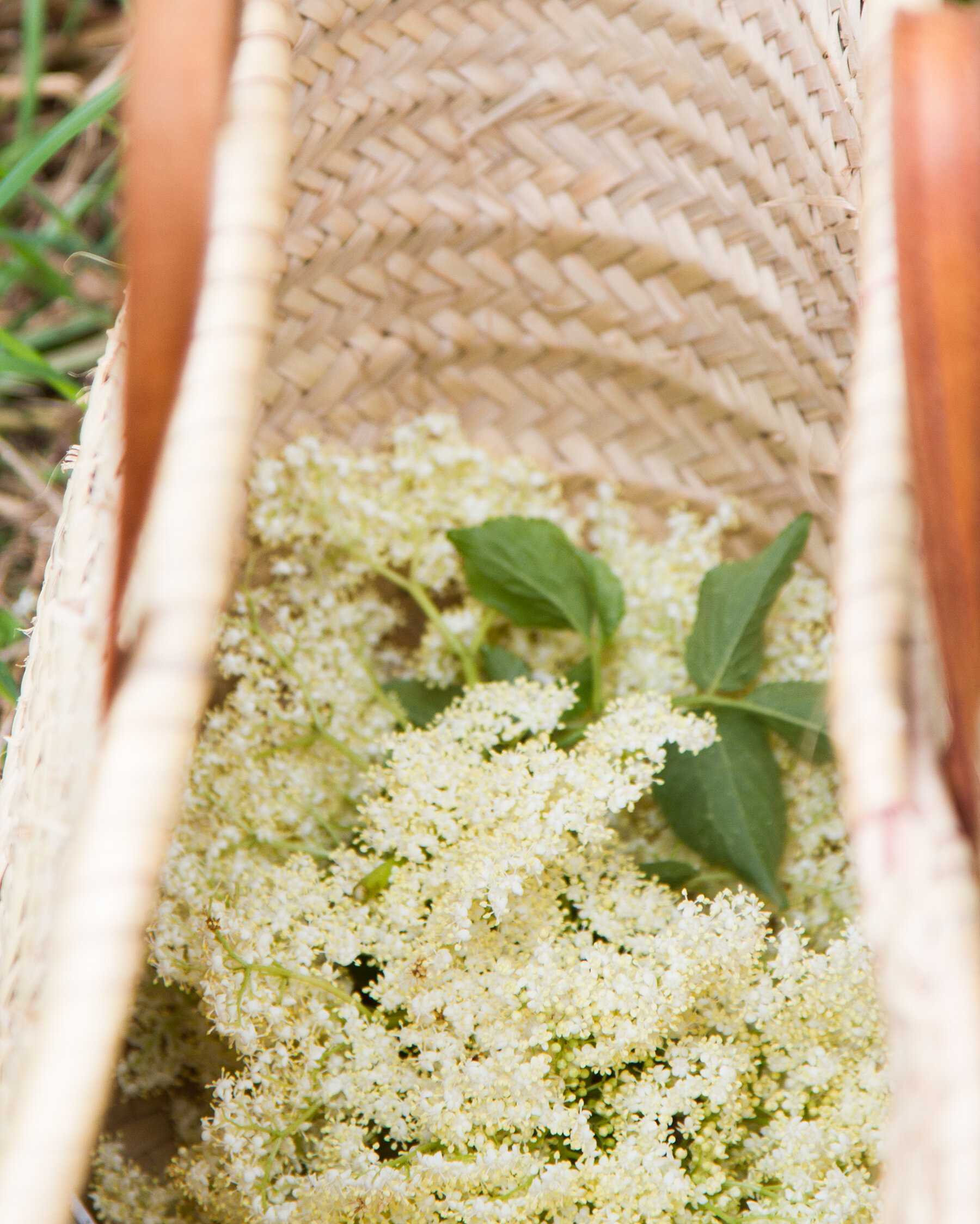
Pick from a bush that’s filled with flowers, and take sparingly from each plant. The flowers become elderberries of course, and they’re marvels in their own right and deserving of the chance to grow into themselves.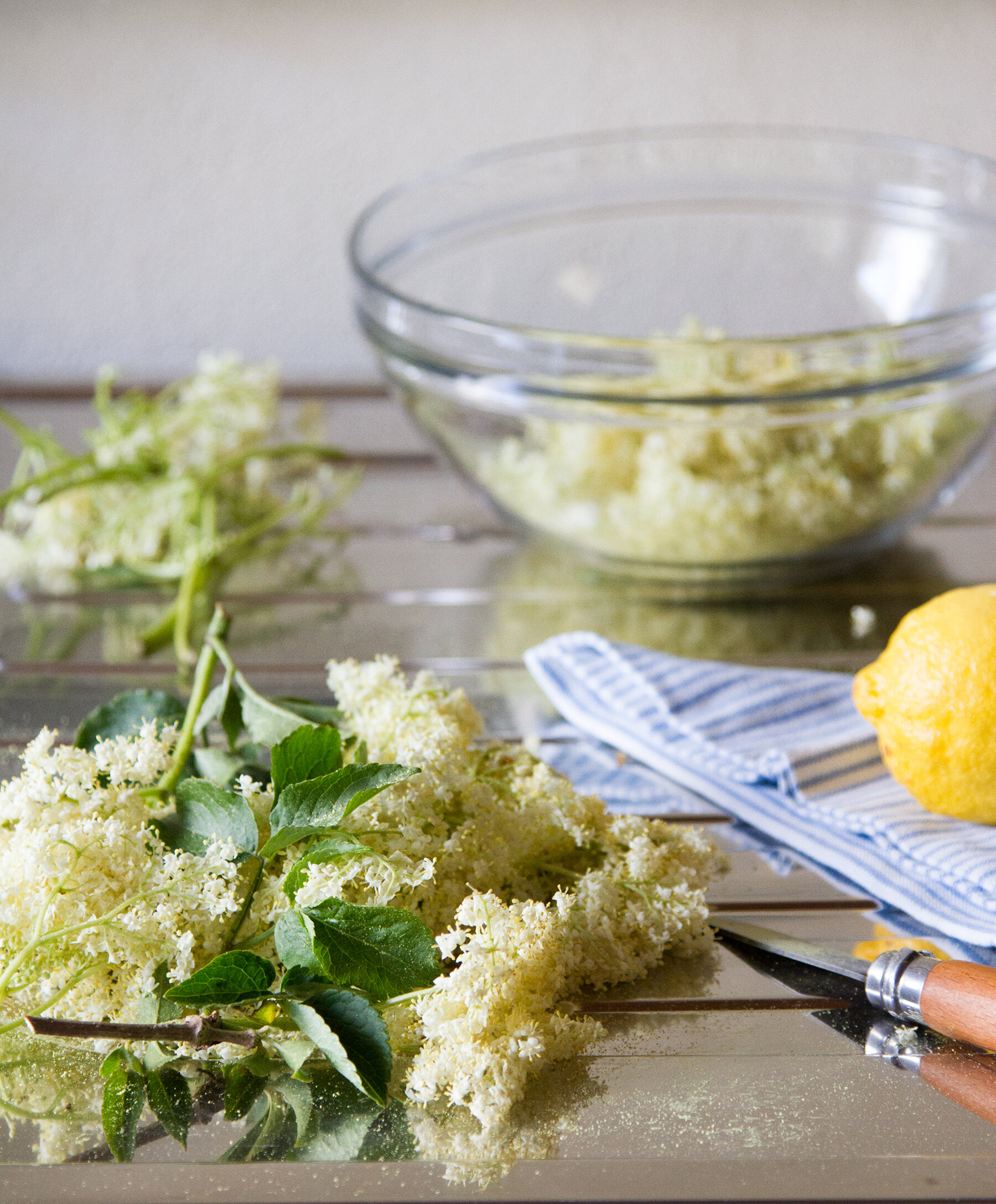
There are as many variations on a basic elderflower cordial as there are recipes on the internet. Some call for infusing the water with flowers and then adding the sugar. Others call for infusing the syrup itself. I chose to steep the flowers in the syrupy sugar water because the high sugar concentration helps prevent the flowers from molding while they steep (and because I have PTSD from once letting an entire bowl of hand-foraged linden go moldy). Most recipes that I’ve found yield an ungodly amount of syrup. (I’m all for drinking your flowers, but multiple liters of cordial sounds excessive unless you’re planning to sell the stuff.) I used just about two cups water and two cups sugar and got what felt like a reasonable jar of syrup for enjoying over the next few weeks.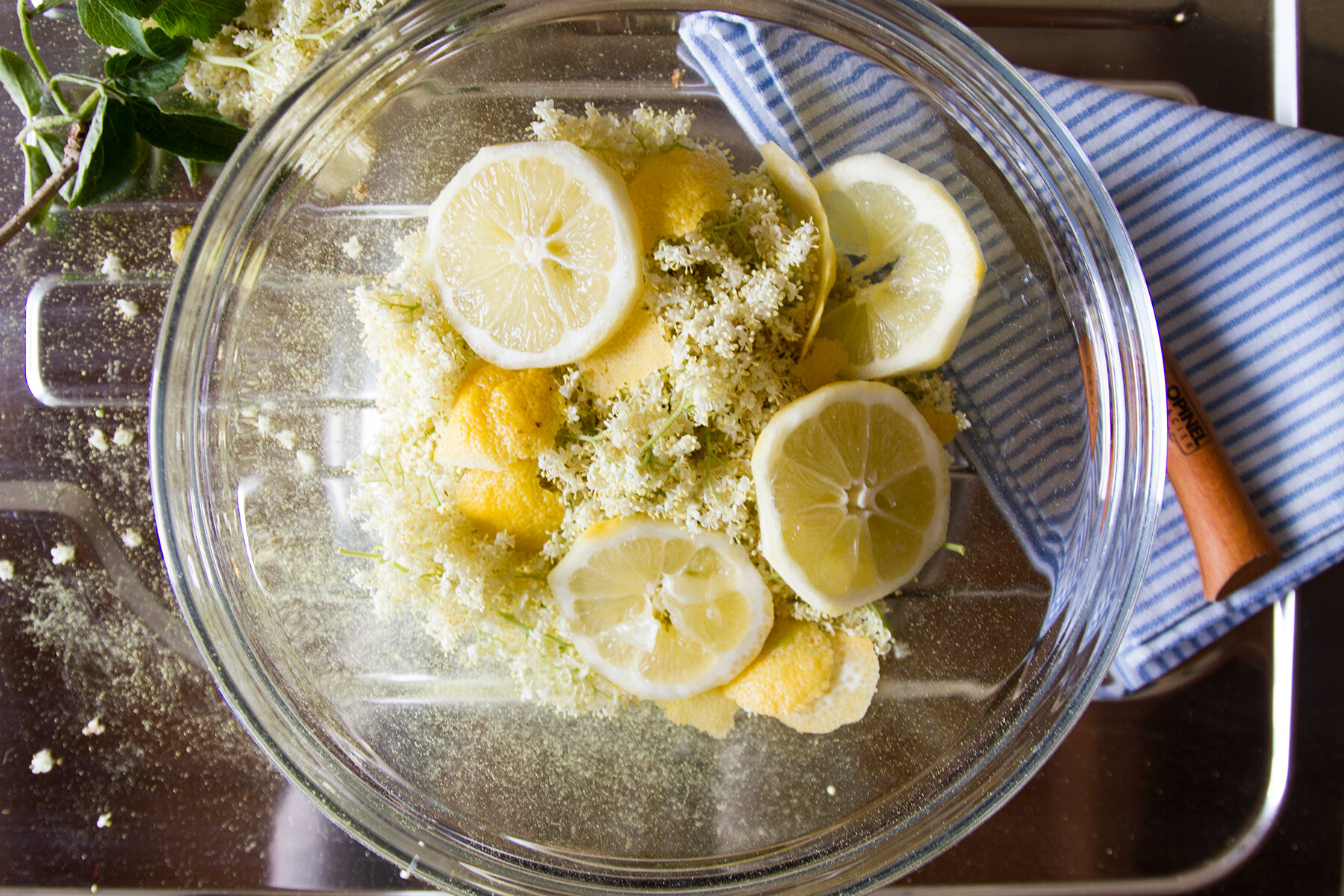
Elderflower Cordial
Here’s what you need:
~ 15 heads of elderflowers
2 cups water
2 cups sugar
1 lemon
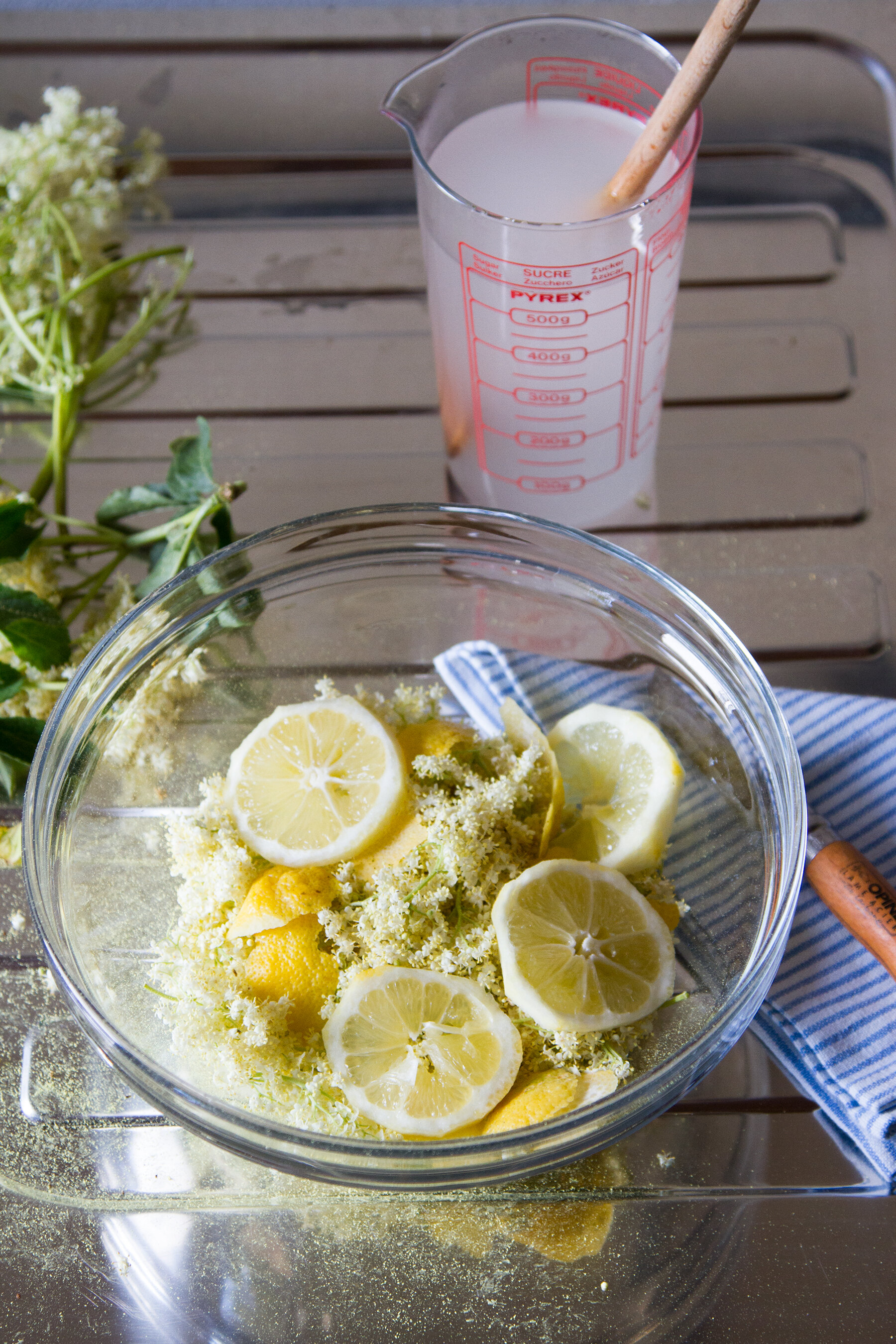
Here’s what to do:
1. Over a large bowl, remove the elderflowers from their stems using a sharp knife or pair of scissors. Pick off any offending bits or bugs, but don’t rinse your flowers; you want to retain as much of the pollen as possible.
2. Use the same knife to remove the peel from an organic or otherwise untreated lemon. Place the peel into the bowl with the flowers. Slice the lemon and add the rounds to the bowl, too.
3. In another vessel, mix together sugar with boiling water. Stir until the sugar has dissolved. (Depending on the kind of sugar you use, you might prefer to do this over low-heat on the stovetop so the sugar properly melts.)
4. Pour the sugar water over the top of the bowl, cover with a towel and allow to steep for at least 24 hours.
5. Once steeped to your satisfaction, strain the golden liquid into a clean vessel and refrigerate.
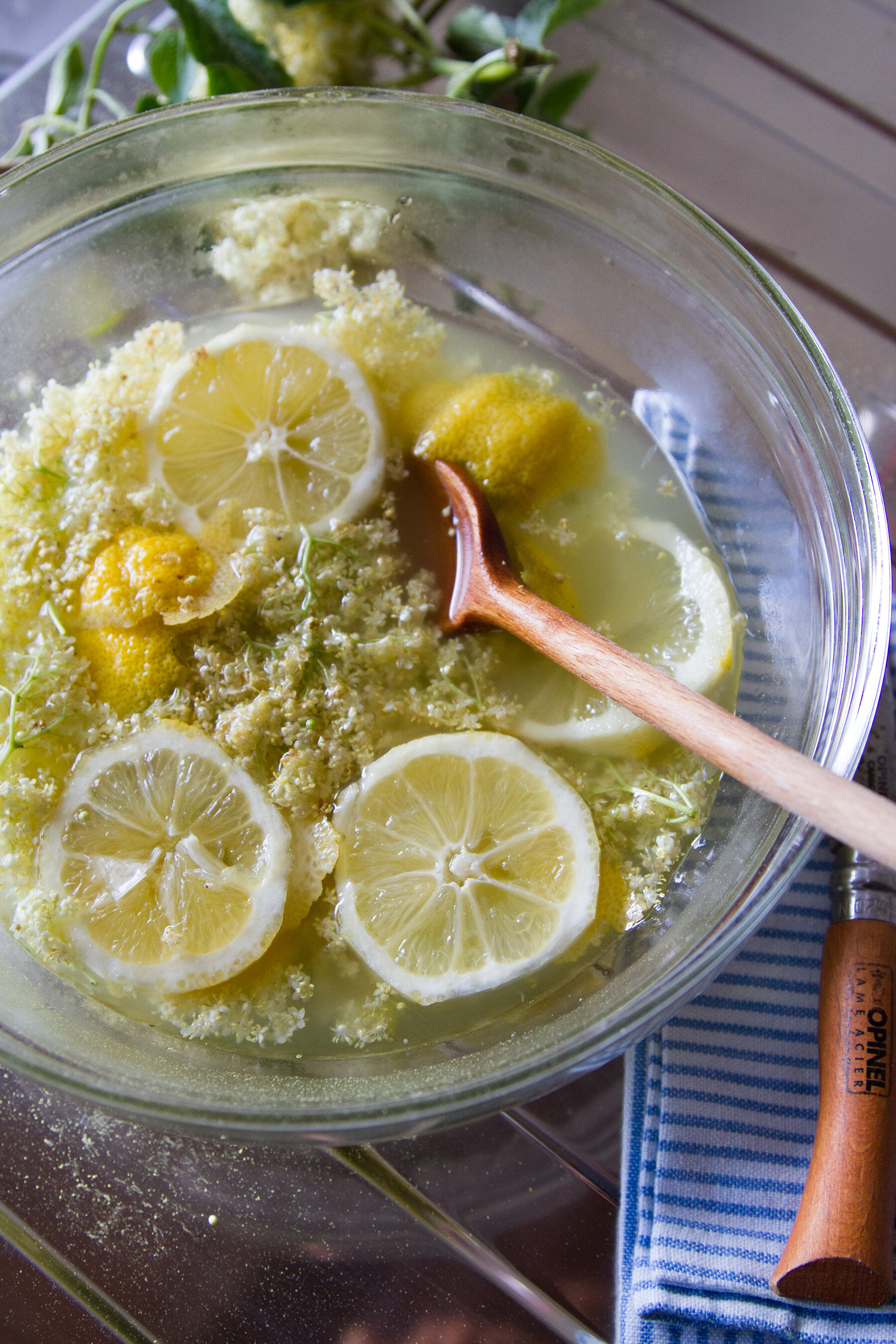
The flowers will brown a bit as they steep—not to worry—just make sure that they’re well submerged.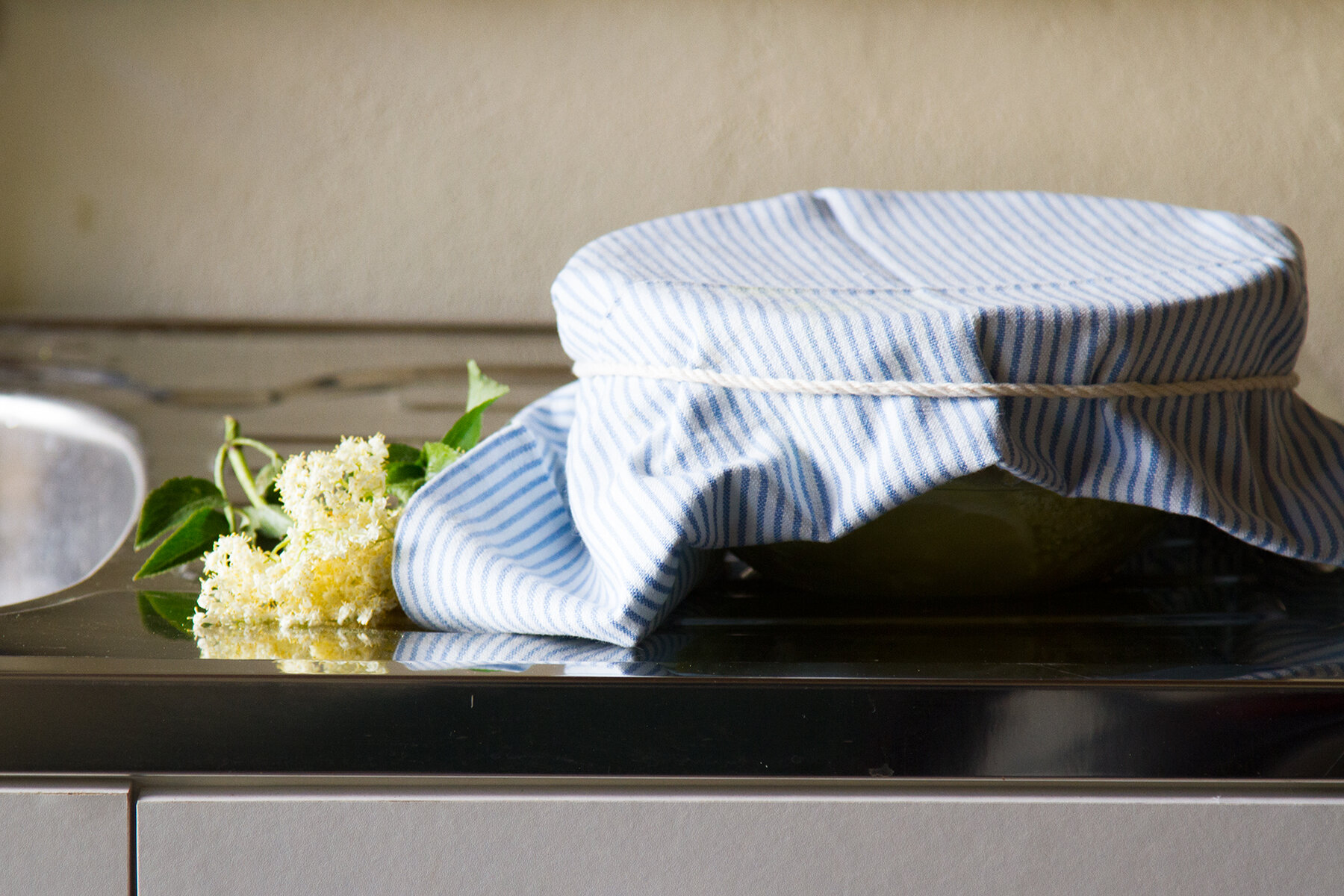
I let my bowl of syrup sit covered in the garage for 24 hours while it steeped. (Oh, the joys of a dedicated workspace outside of a tiny apartment.)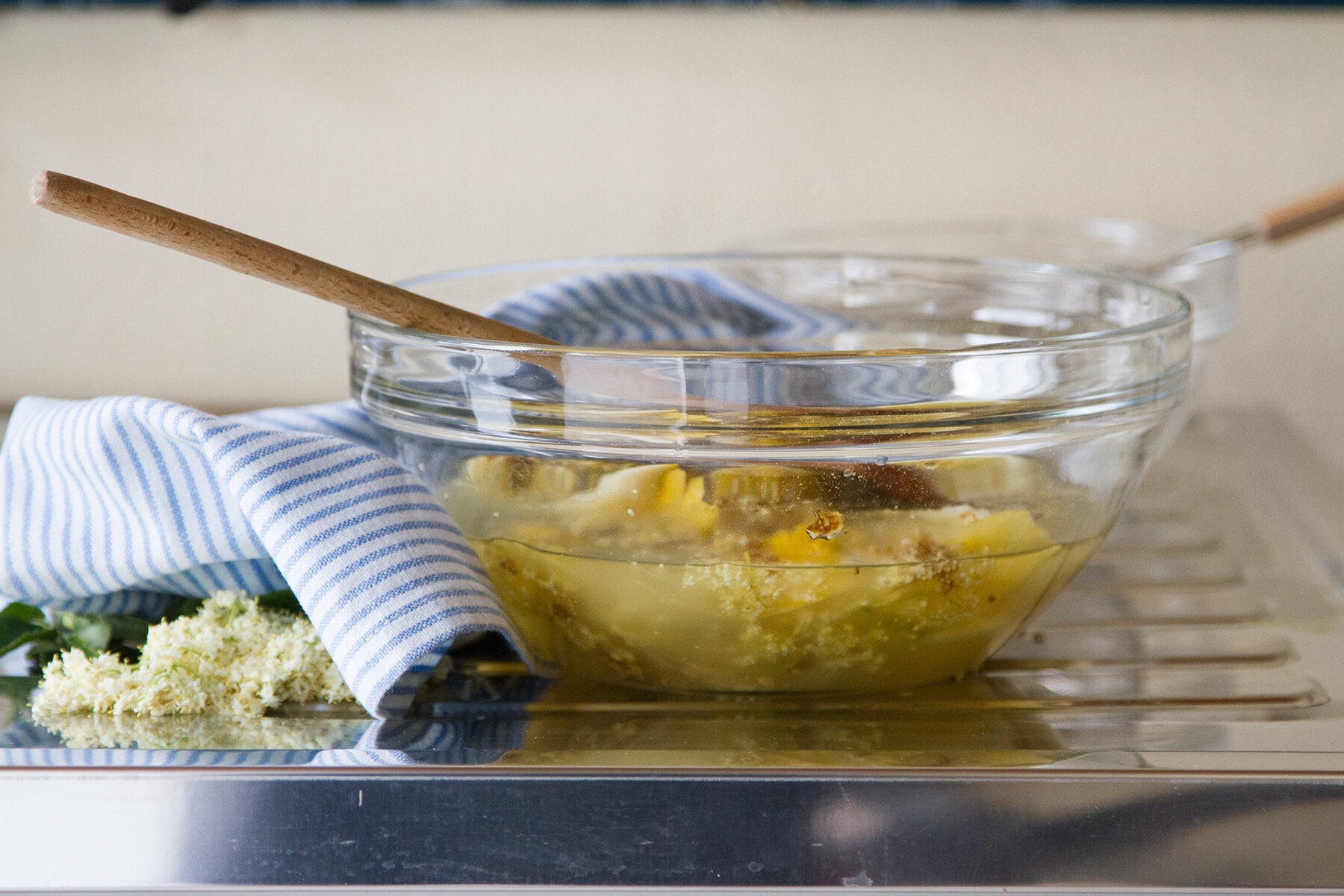
The next day, the syrup was a rich golden and the flowers a bit browned.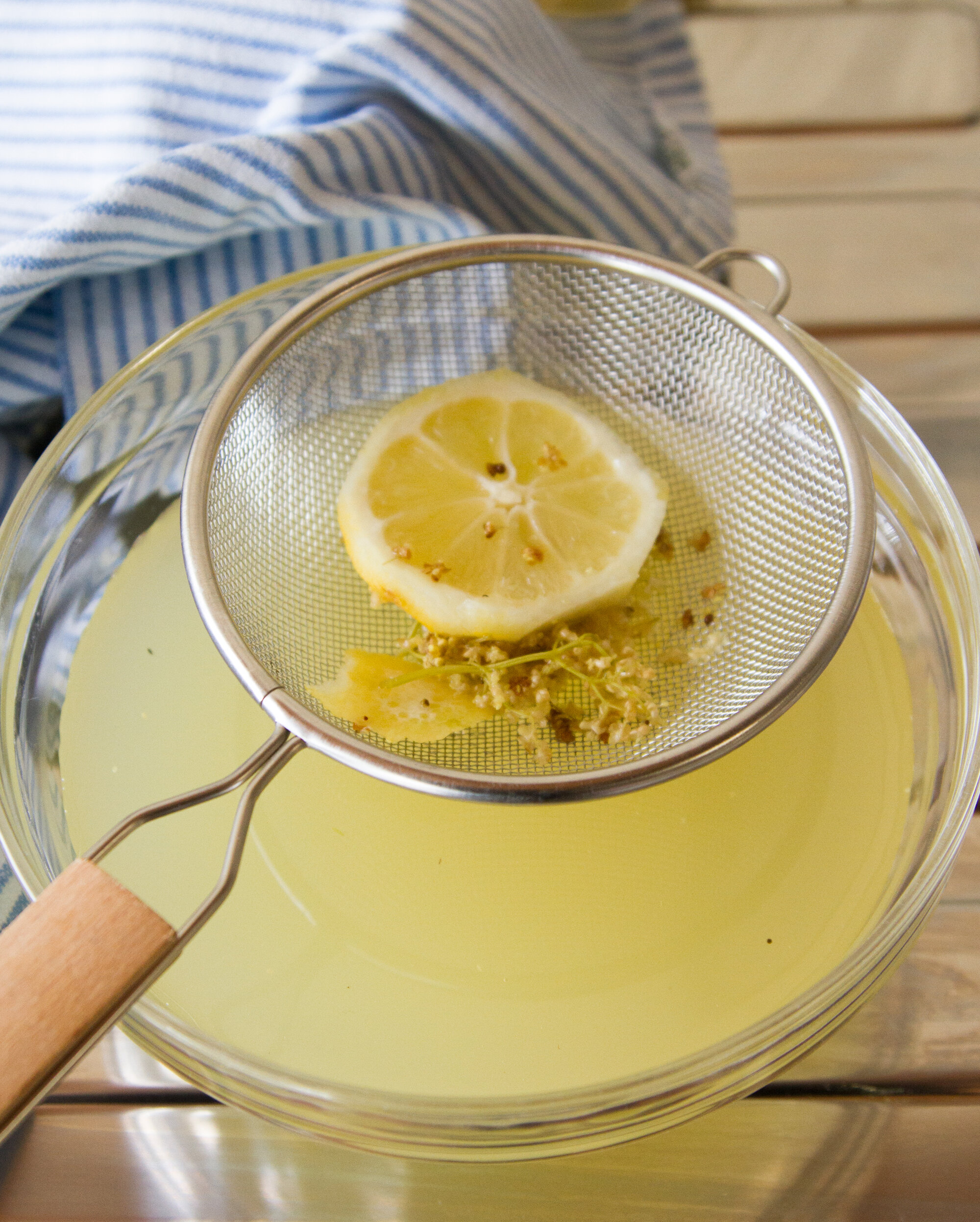
If you’re fussy about stray bits, use a bit of cheesecloth, but I found a classic sieve to do a fine job of straining the finished the syrup.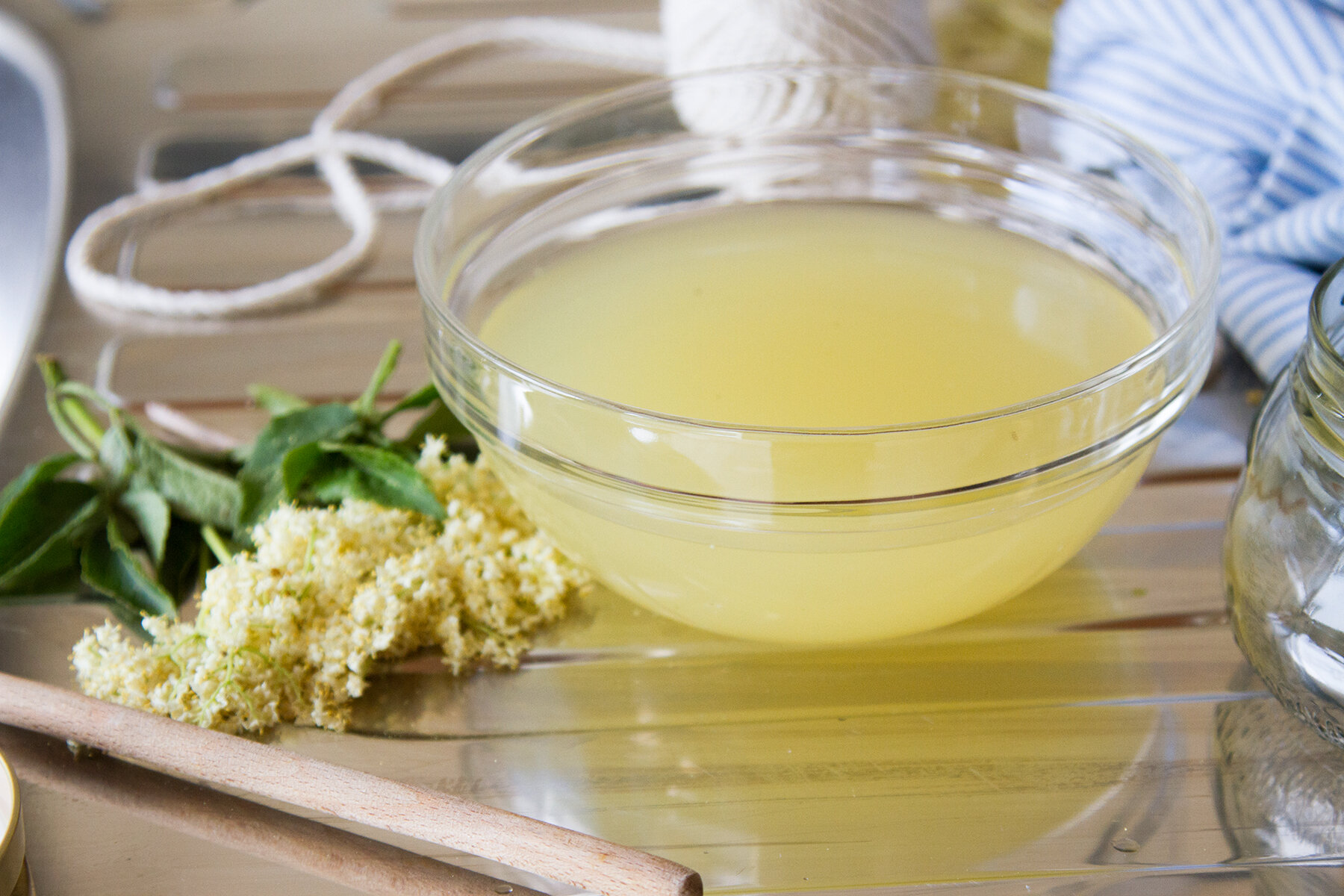
Finished cordial, not to be confused with melted butter.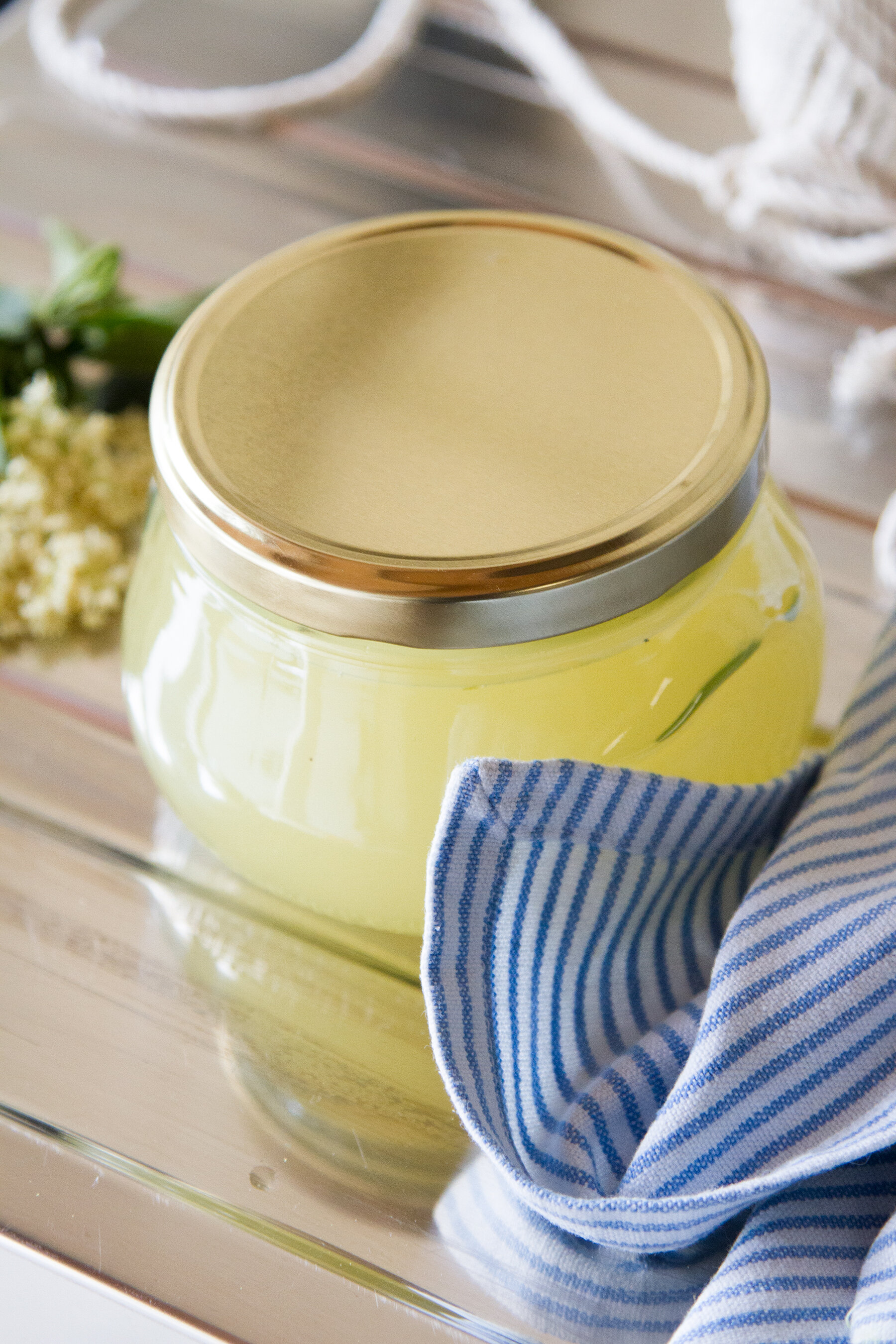
Store your cordial in any clean jar with a tight seal and keep refrigerated for maximum longevity. Like other flowery syrups, elderflower cordial is delicious on everything from buttery cakes to sliced strawberries and poured into all manner of summery drinks—alcoholic or otherwise. Tchin-tchin.
PS. Drink your lilacs.

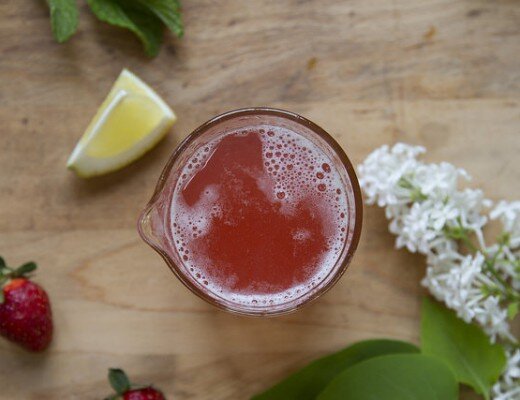
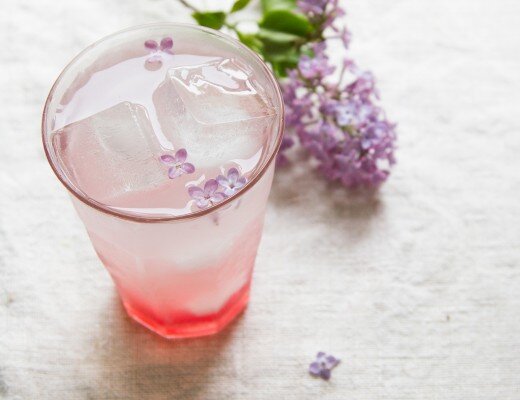
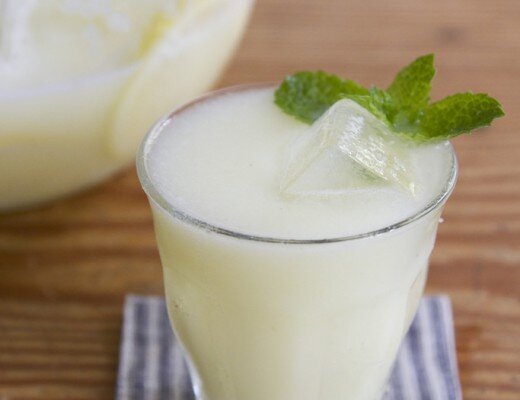
8 Comments
[Ritual raspberry cordial/currant wine observations inserted here]
Happy travels, friend.
Oh, I may just have to find a place to plant that elderberry bush I was ogling over at the nursery the other day… What a great thing to have waiting for you in France!
Thanks for the recipe! After living in Denmark I found a love for elderflower spritzers (white wine, sparkling water, and elderflower cordial) the perfect summer drink.
This made me so happy today (especially after finishing my food chemistry final)! Elderflower cordial was one of my favorite parts of living in England two years ago and seemed to be the perfect non-alcoholic equivalent to the US’s Martinelli’s sparkling apple cider for festive drinks. I was delighted to find a bottle of Belvoir cordial at my local Cost Plus store but now I’m excited to be able to make it myself. Now to find an elderflower bush… maybe I’ll just have to go back to the south of France?
This looks so delightful! I love elderflower syrup, but I never realized before that it was from the pollen of the flowers. Glad to learn something new!
Thanks for the recipe! Made some honeysuckle cordial the other day, now moving on to elderflower 🙂
So easy and delicious! Thanks for the recipe 🙂
Hi Erin! Enjoying your blog from Leipzig, Germany 🙂
What a coincidence – I saw your post a day after I ventured making my own cordial as a gift for a friend.
I have a few extra tips for other readers:
1 – Smell the flowers before picking them. The aroma turns cat-litter-y when the flowers have been open for a while.
2 – Allergy hazard! as I found out the next day.. I didn’t consider how much pollen would come with this. use a cloth mask and have the 24 hours anti-hay-fever pills ready.
3 – I followed the same recipe in the beginning, however, as I was picking the flowers in a forest, I suddenly had a fright over bird-related bacteria. I boiled the flowers shortly and mixed them, including the boiled water, with the steeping sirup.
initially they changed the scent and I was worried that I ruined them, but after a day of steeping the familiar elderflower scent filled the kitchen.
so, my 2-eurocents 🙂
Comments are moderated.